-
 Bitcoin
Bitcoin $108,165.4587
0.78% -
 Ethereum
Ethereum $2,456.3517
1.15% -
 Tether USDt
Tether USDt $1.0003
0.00% -
 XRP
XRP $2.1934
0.05% -
 BNB
BNB $650.0935
0.52% -
 Solana
Solana $151.3905
2.69% -
 USDC
USDC $0.9998
0.00% -
 TRON
TRON $0.2751
-0.32% -
 Dogecoin
Dogecoin $0.1640
0.87% -
 Cardano
Cardano $0.5631
0.57% -
 Hyperliquid
Hyperliquid $38.7115
4.69% -
 Bitcoin Cash
Bitcoin Cash $493.1868
-0.39% -
 Sui
Sui $2.8217
3.61% -
 Chainlink
Chainlink $13.3994
2.08% -
 UNUS SED LEO
UNUS SED LEO $9.1632
0.94% -
 Avalanche
Avalanche $18.0318
1.97% -
 Stellar
Stellar $0.2388
0.35% -
 Toncoin
Toncoin $2.8763
1.41% -
 Shiba Inu
Shiba Inu $0.0...01160
1.59% -
 Litecoin
Litecoin $86.6393
1.29% -
 Hedera
Hedera $0.1485
0.16% -
 Monero
Monero $315.7948
1.56% -
 Polkadot
Polkadot $3.4240
1.88% -
 Bitget Token
Bitget Token $4.6314
-0.44% -
 Dai
Dai $0.9998
-0.01% -
 Ethena USDe
Ethena USDe $1.0002
-0.01% -
 Uniswap
Uniswap $7.2110
2.59% -
 Aave
Aave $270.6087
6.07% -
 Pi
Pi $0.5350
0.52% -
 Pepe
Pepe $0.0...09545
1.26%
How to send Bitcoin from Gate.io to Bitfinex
To send Bitcoin from Gate.io to Bitfinex, verify both accounts, generate a Bitfinex deposit address, initiate withdrawal from Gate.io, and be mindful of fees and transfer times.
Apr 03, 2025 at 07:35 am
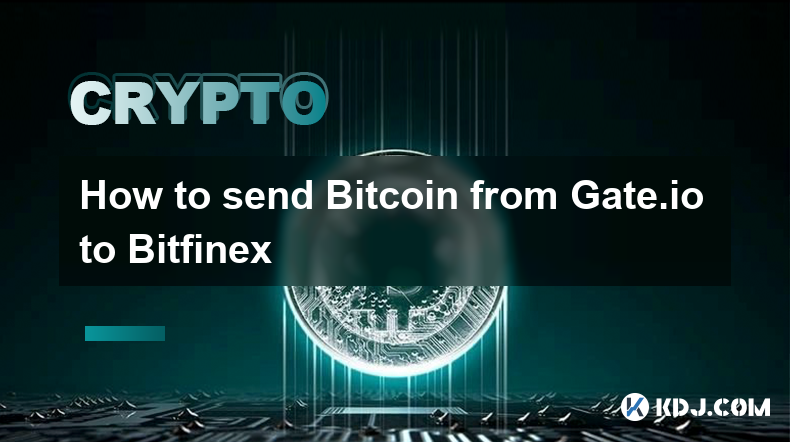
Sending Bitcoin from Gate.io to Bitfinex involves a few straightforward steps. First, you need to ensure that you have a verified account on both exchanges. Once verified, you'll need to generate a Bitcoin deposit address on Bitfinex. After obtaining the address, you can initiate a withdrawal from Gate.io to the Bitfinex address. It's crucial to double-check the address to avoid sending your Bitcoin to the wrong place. Additionally, be aware of the fees associated with the transaction and the potential waiting time for the transfer to complete. This guide will walk you through each step in detail.
Preparing Your Accounts
Before you can send Bitcoin from Gate.io to Bitfinex, you need to ensure that both accounts are fully verified. Verification processes can vary but generally involve submitting personal identification documents. On Gate.io, navigate to the "Account" section, then "Verification" to complete the necessary steps. Similarly, on Bitfinex, go to "Account" and then "Verification." Once both accounts are verified, you'll have full access to deposit and withdrawal functionalities. This step is crucial to ensure that you can move your funds freely between the platforms.
Generating a Bitcoin Deposit Address on Bitfinex
To send Bitcoin to Bitfinex, you first need to generate a Bitcoin deposit address. Log into your Bitfinex account and navigate to the "Deposit" section. Select Bitcoin (BTC) as the cryptocurrency you wish to deposit. Bitfinex will then generate a unique Bitcoin address for you. This address is where you will send your Bitcoin from Gate.io. Make sure to copy this address accurately, as any mistake could result in the loss of your funds. You can also generate a new address if needed, but for most users, one address will suffice.
Initiating the Withdrawal from Gate.io
Once you have your Bitcoin deposit address from Bitfinex, you can initiate the withdrawal from Gate.io. Log into your Gate.io account and go to the "Withdraw" section. Select Bitcoin (BTC) as the cryptocurrency you want to withdraw. Enter the Bitcoin address you obtained from Bitfinex in the "Address" field. You will also need to specify the amount of Bitcoin you want to send. Before confirming the withdrawal, double-check the address and the amount to ensure everything is correct. Gate.io may also require you to enter a 2-factor authentication (2FA) code for added security.
Understanding Transaction Fees and Waiting Times
When sending Bitcoin from Gate.io to Bitfinex, you need to be aware of the transaction fees and waiting times. Gate.io charges a withdrawal fee for Bitcoin, which can vary based on network conditions. You can check the current fee on the withdrawal page before confirming your transaction. Additionally, the Bitcoin network itself charges a transaction fee, which can fluctuate based on network congestion. The waiting time for your Bitcoin to arrive at Bitfinex can range from a few minutes to several hours, depending on the Bitcoin network's current load. Always factor in these variables when planning your transfers.
Ensuring Security During the Transfer
Security is paramount when transferring cryptocurrencies. To ensure the safety of your Bitcoin during the transfer from Gate.io to Bitfinex, consider the following steps:
- Use 2FA: Enable two-factor authentication on both exchanges to add an extra layer of security.
- Verify Addresses: Double and triple-check the Bitcoin address you are sending to. A single mistake can result in the loss of your funds.
- Use Secure Networks: Avoid using public Wi-Fi when initiating transactions. Use a secure, private network to minimize the risk of hacking.
- Monitor Your Transactions: Keep an eye on the transaction status on both Gate.io and Bitfinex. If anything seems unusual, contact customer support immediately.
By following these security measures, you can minimize the risks associated with transferring Bitcoin between exchanges.
Confirming the Receipt of Bitcoin on Bitfinex
After initiating the withdrawal from Gate.io, you need to confirm that the Bitcoin has been successfully received on Bitfinex. Log into your Bitfinex account and go to the "Transactions" or "History" section to check the status of your deposit. It may take some time for the transaction to be confirmed on the Bitcoin blockchain, so be patient. Once the transaction is confirmed, the Bitcoin should appear in your Bitfinex account balance. If you encounter any issues or delays, you can contact Bitfinex customer support for assistance. Always ensure that the amount received matches the amount sent from Gate.io.
Troubleshooting Common Issues
Sometimes, issues can arise when sending Bitcoin from Gate.io to Bitfinex. Here are some common problems and their solutions:
- Transaction Not Showing Up: If the transaction does not appear in your Bitfinex account after a reasonable time, check the transaction ID on a blockchain explorer like Blockchain.com. If it shows as confirmed, contact Bitfinex support.
- Incorrect Address: If you accidentally sent Bitcoin to the wrong address, there is little that can be done. Always double-check the address before sending.
- Insufficient Funds: Ensure you have enough Bitcoin in your Gate.io account to cover both the amount you want to send and the withdrawal fee.
- Network Congestion: If the Bitcoin network is congested, transactions may take longer to process. Be patient and monitor the transaction status.
By being aware of these potential issues, you can better manage your Bitcoin transfers and resolve any problems that may arise.
Best Practices for Future Transfers
To ensure smooth and secure Bitcoin transfers in the future, consider adopting the following best practices:
- Regularly Update Your Security Measures: Keep your 2FA app updated and use strong, unique passwords for your exchange accounts.
- Keep Records: Maintain a record of all your transactions, including the addresses used and the amounts sent. This can help in case of disputes or issues.
- Stay Informed: Keep up-to-date with the latest news and developments in the cryptocurrency space, especially regarding network fees and congestion.
- Use Test Transactions: Before sending large amounts of Bitcoin, consider sending a small test transaction to ensure everything works as expected.
By following these best practices, you can enhance the security and efficiency of your Bitcoin transfers between Gate.io and Bitfinex.
Common Questions Related to Sending Bitcoin from Gate.io to Bitfinex
Q: How long does it take to send Bitcoin from Gate.io to Bitfinex?
A: The time it takes to send Bitcoin from Gate.io to Bitfinex can vary from a few minutes to several hours, depending on the current load of the Bitcoin network.
Q: What are the fees for sending Bitcoin from Gate.io to Bitfinex?
A: Gate.io charges a withdrawal fee for Bitcoin, which can vary based on network conditions. Additionally, the Bitcoin network itself charges a transaction fee, which can fluctuate based on network congestion.
Q: Is it safe to send Bitcoin from Gate.io to Bitfinex?
A: Yes, it is safe as long as you follow security best practices such as using 2FA, verifying addresses, and using secure networks. Always double-check the address before sending.
Q: What should I do if my Bitcoin transaction from Gate.io to Bitfinex is delayed?
A: If your transaction is delayed, check the transaction ID on a blockchain explorer like Blockchain.com. If it shows as confirmed, contact Bitfinex support for assistance.
Q: Can I cancel a Bitcoin transaction after it has been sent from Gate.io to Bitfinex?
A: Once a Bitcoin transaction is sent, it cannot be canceled. It is crucial to double-check all details before confirming the transaction.
Q: How can I ensure the Bitcoin address I am sending to is correct?
A: Always copy and paste the Bitcoin address from Bitfinex into Gate.io. Double-check the address before sending to avoid any mistakes.
Q: What should I do if I sent Bitcoin to the wrong address?
A: If you sent Bitcoin to the wrong address, there is little that can be done. Always double-check the address before sending to prevent this issue.
Q: Can I send Bitcoin from Gate.io to Bitfinex without verification?
A: No, you need to have a verified account on both Gate.io and Bitfinex to send and receive Bitcoin.
Q: How can I track my Bitcoin transaction from Gate.io to Bitfinex?
A: You can track your Bitcoin transaction using the transaction ID on a blockchain explorer like Blockchain.com.
Q: What are the best practices for sending Bitcoin between exchanges?
A: Best practices include using 2FA, verifying addresses, using secure networks, keeping records, staying informed, and conducting test transactions before sending large amounts.
Disclaimer:info@kdj.com
The information provided is not trading advice. kdj.com does not assume any responsibility for any investments made based on the information provided in this article. Cryptocurrencies are highly volatile and it is highly recommended that you invest with caution after thorough research!
If you believe that the content used on this website infringes your copyright, please contact us immediately (info@kdj.com) and we will delete it promptly.
- Cryptos, Web3, Growth: What's Hot in the Streets (and on the Blockchain) for 2025
- 2025-06-30 06:30:12
- XRPL Validator Vet Sets the Record Straight: XRP, Not Your Typical US-Based Crypto
- 2025-06-30 06:30:12
- BNB, Maxwell Fork, and BSC Mainnet: Navigating Speed, Stability, and Geopolitical Tides
- 2025-06-30 06:50:12
- Qubetics, Render, Cronos: The Altcoins Poised to Pop in the Next Bull Run
- 2025-06-30 06:54:04
- Web3 AI, Bitcoin Cash, and Cardano: Crypto's Rising Stars in 2025
- 2025-06-30 06:57:13
- Bitcoin, Exchanges, and Institutions: A New Era of Crypto Dynamics
- 2025-06-30 06:35:12
Related knowledge
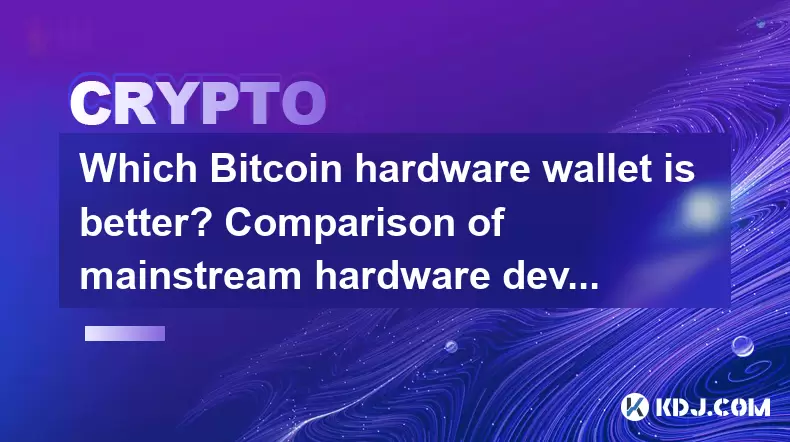
Which Bitcoin hardware wallet is better? Comparison of mainstream hardware devices
Jun 16,2025 at 02:08am
What Is a Bitcoin Hardware Wallet?A Bitcoin hardware wallet is a physical device designed to securely store the private keys associated with your cryptocurrency holdings. Unlike software wallets, which are more vulnerable to online threats, hardware wallets keep private keys offline, significantly reducing the risk of unauthorized access. These devices ...
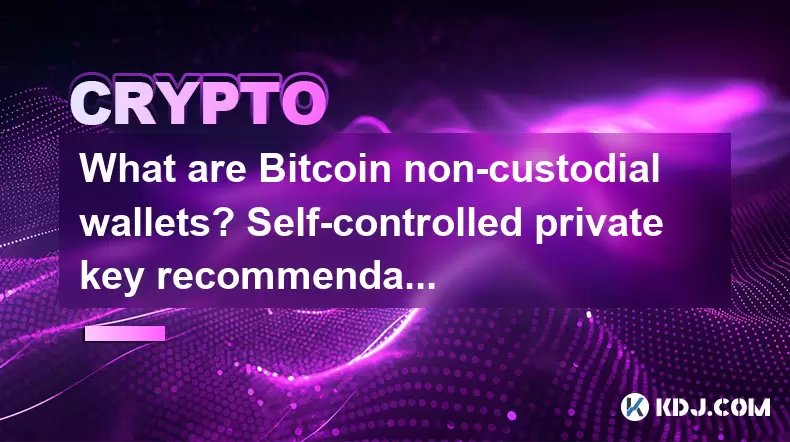
What are Bitcoin non-custodial wallets? Self-controlled private key recommendation
Jun 16,2025 at 11:29pm
Understanding Bitcoin Non-Custodial WalletsA Bitcoin non-custodial wallet is a type of digital wallet where users retain full control over their private keys. Unlike custodial wallets, which are managed by third-party services such as exchanges, non-custodial wallets ensure that only the user can access and manage their funds. This means no intermediary...
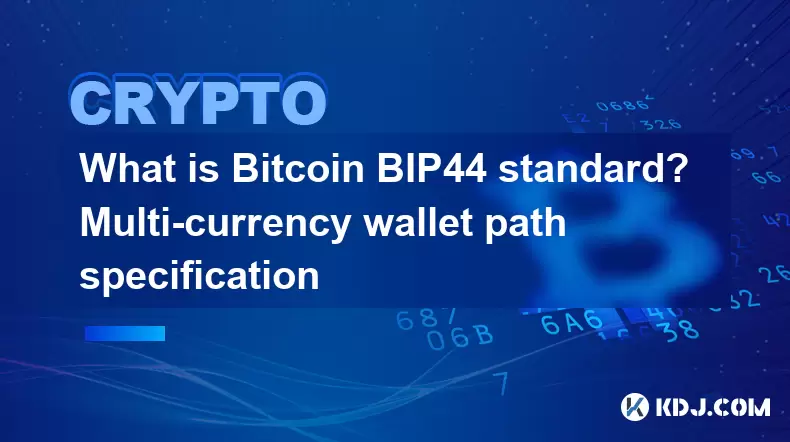
What is Bitcoin BIP44 standard? Multi-currency wallet path specification
Jun 15,2025 at 04:08pm
Understanding the BIP44 Standard in Bitcoin and CryptocurrencyThe BIP44 standard, which stands for Bitcoin Improvement Proposal 44, is a widely adopted hierarchical deterministic wallet structure used across various cryptocurrencies. It defines a structured path format that enables wallets to support multiple currencies while maintaining consistency and...

What is Bitcoin HD wallet? Advantages of layered deterministic wallets
Jun 16,2025 at 03:56pm
Understanding Bitcoin HD WalletsA Bitcoin HD wallet, or Hierarchical Deterministic wallet, is a type of cryptocurrency wallet that generates multiple keys and addresses from a single seed phrase. Unlike traditional wallets that create random private keys for each transaction, an HD wallet follows a structured hierarchy to derive keys in a deterministic ...
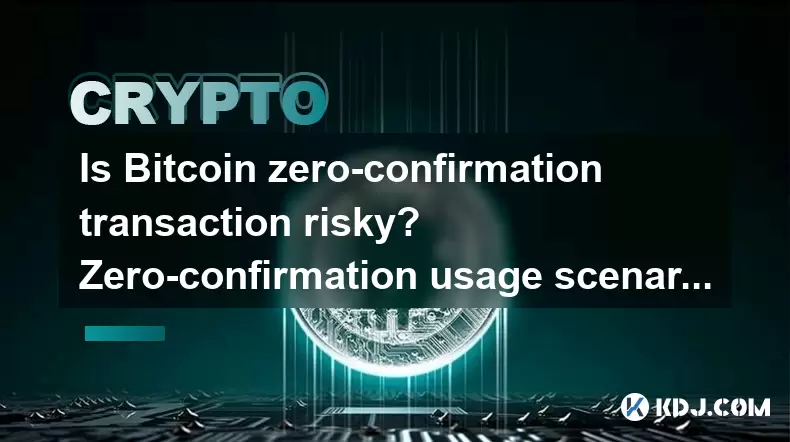
Is Bitcoin zero-confirmation transaction risky? Zero-confirmation usage scenarios
Jun 15,2025 at 03:57am
Understanding Zero-Confirmation Transactions in BitcoinBitcoin zero-confirmation transactions, often referred to as 'unconfirmed transactions,' are those that have been broadcast to the network but have not yet been included in a block. This means they have not received any confirmations from miners. While these transactions can be useful in certain con...
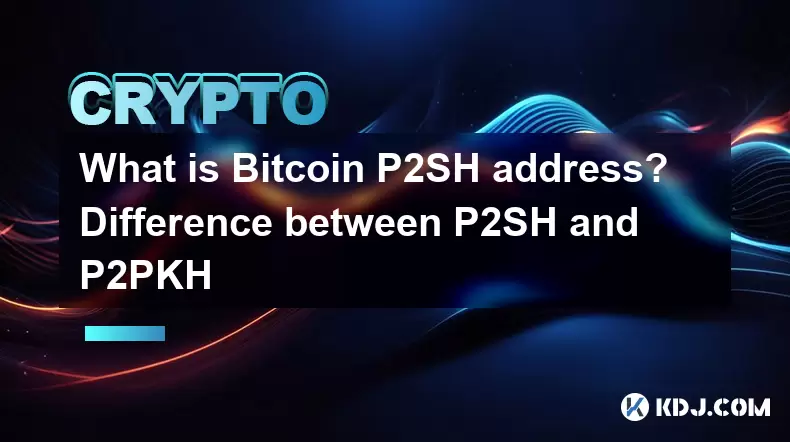
What is Bitcoin P2SH address? Difference between P2SH and P2PKH
Jun 16,2025 at 09:49pm
Understanding Bitcoin P2SH AddressesA Pay-to-Script-Hash (P2SH) address in the Bitcoin network is a type of address that allows users to send funds to a script hash rather than directly to a public key hash, as seen in earlier address formats. This innovation was introduced through BIP 16, enhancing flexibility and enabling more complex transaction type...

Which Bitcoin hardware wallet is better? Comparison of mainstream hardware devices
Jun 16,2025 at 02:08am
What Is a Bitcoin Hardware Wallet?A Bitcoin hardware wallet is a physical device designed to securely store the private keys associated with your cryptocurrency holdings. Unlike software wallets, which are more vulnerable to online threats, hardware wallets keep private keys offline, significantly reducing the risk of unauthorized access. These devices ...

What are Bitcoin non-custodial wallets? Self-controlled private key recommendation
Jun 16,2025 at 11:29pm
Understanding Bitcoin Non-Custodial WalletsA Bitcoin non-custodial wallet is a type of digital wallet where users retain full control over their private keys. Unlike custodial wallets, which are managed by third-party services such as exchanges, non-custodial wallets ensure that only the user can access and manage their funds. This means no intermediary...

What is Bitcoin BIP44 standard? Multi-currency wallet path specification
Jun 15,2025 at 04:08pm
Understanding the BIP44 Standard in Bitcoin and CryptocurrencyThe BIP44 standard, which stands for Bitcoin Improvement Proposal 44, is a widely adopted hierarchical deterministic wallet structure used across various cryptocurrencies. It defines a structured path format that enables wallets to support multiple currencies while maintaining consistency and...

What is Bitcoin HD wallet? Advantages of layered deterministic wallets
Jun 16,2025 at 03:56pm
Understanding Bitcoin HD WalletsA Bitcoin HD wallet, or Hierarchical Deterministic wallet, is a type of cryptocurrency wallet that generates multiple keys and addresses from a single seed phrase. Unlike traditional wallets that create random private keys for each transaction, an HD wallet follows a structured hierarchy to derive keys in a deterministic ...

Is Bitcoin zero-confirmation transaction risky? Zero-confirmation usage scenarios
Jun 15,2025 at 03:57am
Understanding Zero-Confirmation Transactions in BitcoinBitcoin zero-confirmation transactions, often referred to as 'unconfirmed transactions,' are those that have been broadcast to the network but have not yet been included in a block. This means they have not received any confirmations from miners. While these transactions can be useful in certain con...

What is Bitcoin P2SH address? Difference between P2SH and P2PKH
Jun 16,2025 at 09:49pm
Understanding Bitcoin P2SH AddressesA Pay-to-Script-Hash (P2SH) address in the Bitcoin network is a type of address that allows users to send funds to a script hash rather than directly to a public key hash, as seen in earlier address formats. This innovation was introduced through BIP 16, enhancing flexibility and enabling more complex transaction type...
See all articles

























































































